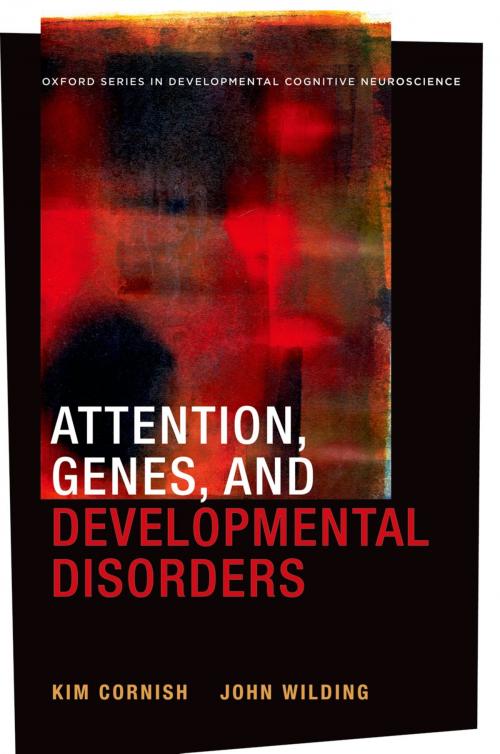Attention, Genes, and Developmental Disorders
Nonfiction, Health & Well Being, Psychology, Cognitive Psychology| Author: | Kim Cornish, John Wilding | ISBN: | 9780190292669 |
| Publisher: | Oxford University Press | Publication: | August 12, 2010 |
| Imprint: | Oxford University Press | Language: | English |
| Author: | Kim Cornish, John Wilding |
| ISBN: | 9780190292669 |
| Publisher: | Oxford University Press |
| Publication: | August 12, 2010 |
| Imprint: | Oxford University Press |
| Language: | English |
What is attention? How does it go wrong? Do attention deficits arise from genes or from the environment? Can we cure it with drugs or training? Are there disorders of attention other than deficit disorders? The past decade has seen a burgeoning of research on the subject of attention. This research has been facilitated by advances on several fronts: New methods are now available for viewing brain activity in real time, there is expanding information on the complexities of the biochemistry of neural activity, individual genes can be isolated and their functions identified, analysis of the component processes included under the broad umbrella of "attention" has become increasingly sophisticated, and ingenious methods have been devised for measuring typical and atypical development of these processes, from infancy into childhood, and then into adulthood. In this book, Kim Cornish and John Wilding are concerned with attention and its development, both typical and atypical, particularly in disorders with a known genetic etiology or assumed genetic linkage. Tremendous advances across seemingly diverse disciplines - molecular genetics, pediatric neurology, child psychiatry, developmental cognitive neuroscience, and education - have culminated in a wealth of new methods for elucidating disorders at multiple levels, possibly paving the way for new treatment options. Cornish and Wilding use three specific-yet-interlinking levels of analysis: genetic blueprint (genotype), the developing brain, and the behavioral-cognitive outcomes (phenotype), as the basis for charting the attention profiles of six well-documented neurodevelopmental disorders: ADHD, autism, fragile X syndrome, Down syndrome, Williams syndrome, and 22q11 deletion syndrome. Their overarching aim in this book is to provide the most authoritative and extensive account to date of disorder-specific attention profiles and their development from infancy through adolescence.
What is attention? How does it go wrong? Do attention deficits arise from genes or from the environment? Can we cure it with drugs or training? Are there disorders of attention other than deficit disorders? The past decade has seen a burgeoning of research on the subject of attention. This research has been facilitated by advances on several fronts: New methods are now available for viewing brain activity in real time, there is expanding information on the complexities of the biochemistry of neural activity, individual genes can be isolated and their functions identified, analysis of the component processes included under the broad umbrella of "attention" has become increasingly sophisticated, and ingenious methods have been devised for measuring typical and atypical development of these processes, from infancy into childhood, and then into adulthood. In this book, Kim Cornish and John Wilding are concerned with attention and its development, both typical and atypical, particularly in disorders with a known genetic etiology or assumed genetic linkage. Tremendous advances across seemingly diverse disciplines - molecular genetics, pediatric neurology, child psychiatry, developmental cognitive neuroscience, and education - have culminated in a wealth of new methods for elucidating disorders at multiple levels, possibly paving the way for new treatment options. Cornish and Wilding use three specific-yet-interlinking levels of analysis: genetic blueprint (genotype), the developing brain, and the behavioral-cognitive outcomes (phenotype), as the basis for charting the attention profiles of six well-documented neurodevelopmental disorders: ADHD, autism, fragile X syndrome, Down syndrome, Williams syndrome, and 22q11 deletion syndrome. Their overarching aim in this book is to provide the most authoritative and extensive account to date of disorder-specific attention profiles and their development from infancy through adolescence.















